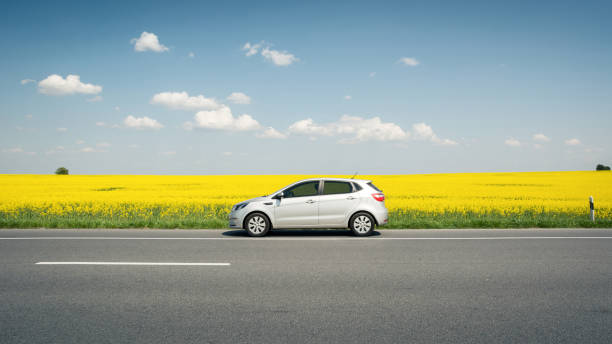Car Discontinuation: The Impact of Stricter Emissions Standards
Car Discontinuation is increasingly driven by stricter emissions regulations. As countries and regions ramp up their environmental policies, car manufacturers must comply with tighter standards for fuel efficiency and CO2 emissions. This is particularly challenging for older car models that rely on internal combustion engines (ICE).
For instance, many budget hatchbacks and sedans, which are popular but less efficient, are being phased out in favor of electric vehicles (EVs) or hybrid models. Automakers are finding it more cost-effective to discontinue older models and invest in electric technology to meet government regulations. This shift is helping reduce environmental footprints but also forcing the end of beloved models that consumers have relied on for years.
Car Discontinuation: The Shift Toward SUVs and Crossovers
Car Discontinuation is also influenced by the overwhelming consumer demand for SUVs and crossovers. Over the past decade, buyers have flocked to larger vehicles that offer more space, higher driving positions, and more versatility. As a result, traditional sedans and hatchbacks are seeing sharp declines in sales.
Manufacturers are adjusting to this change by cutting models that no longer meet the market demand. For instance, the Ford EcoSport and VW Polo Vivo, once staples in their respective segments, are being phased out. These vehicles are being replaced by new, more popular SUVs that cater to modern preferences.
Car Discontinuation: Consumer Behavior and Sales Slumps
Car Discontinuation is often directly linked to declining sales figures. Models that fail to capture consumer interest or do not meet market expectations are at a high risk of being discontinued. While some models may have been successful when first launched, changing consumer behavior, such as a preference for tech-savvy and more fuel-efficient vehicles, can lead to poor sales.
In the case of the Jeep Renegade and Fiat Tipo, these vehicles struggled to attract enough buyers in recent years. As the automotive market becomes more competitive, automakers can no longer afford to keep manufacturing models that don’t sell well. Discontinuing low-performing models allows manufacturers to refocus their efforts on more profitable and popular alternatives.
Car Discontinuation: Technological Advancements and the Rise of Electric Vehicles
Car Discontinuation is also a result of the rapid advancement of automotive technology, particularly in the electric vehicle (EV) sector. As the demand for electric cars grows, traditional gas-powered vehicles are being left behind. Manufacturers are investing heavily in EVs to meet new customer expectations and regulatory requirements.
Models like the Audi A4, which were once top contenders in the luxury sedan market, are being replaced with newer electric alternatives. With EV technology becoming more affordable and accessible, manufacturers are opting to end the production of outdated models and focus on creating vehicles that align with the future of transportation.
Car Discontinuation: The Pressure of Rising Manufacturing Costs
Car Discontinuation is also driven by rising manufacturing costs. As the cost of raw materials like steel, aluminum, and lithium increases, it becomes more expensive for car manufacturers to produce older models, especially those that were designed before the introduction of newer technologies.
This is particularly evident in the production of internal combustion engine vehicles, which require complex powertrains and larger parts. Faced with these rising costs and the shift toward more efficient production methods, many manufacturers choose to discontinue certain models rather than upgrade their old designs. This allows them to cut costs and invest in more profitable, futuristic vehicle designs.
Car Discontinuation: Global Model Rationalization and Brand Strategy
Car Discontinuation is sometimes part of a broader global strategy by manufacturers to streamline their product lineups. For instance, a car model that may still be popular in one country could be discontinued in another region due to differences in market conditions, local consumer preferences, and the economic landscape.
Brands like Volkswagen and Ford regularly review their global offerings and adjust their product portfolios to suit different markets. As part of this rationalization process, models that don’t align with the company’s future direction—such as the focus on electric vehicles or high-margin SUVs—are often the first to be axed.
Car Discontinuation: Supply Chain Disruptions and Production Challenges
Car Discontinuation is also impacted by global supply chain challenges. The COVID-19 pandemic and the subsequent disruptions in the supply of semiconductor chips, raw materials, and other essential components have forced automakers to reconsider which models are worth keeping in production.
Models that require more complex or less in-demand features may be discontinued as manufacturers opt to focus on models that are easier to produce or have greater market potential. This phenomenon has become even more pronounced in the wake of the COVID-19 pandemic, as automakers struggle with production delays and shifting market needs.
FAQs
Q1: Why are so many cars being discontinued in 2025?
Car Discontinuation in 2025 is primarily due to stricter emissions regulations, changing consumer preferences, and technological advancements, such as the rise of electric vehicles.
Q2: What happens to discontinued car models?
When a car model is discontinued, it is typically replaced by a new model that better meets current market demands. Discontinued vehicles may also be sold at discounted prices or become collectible items.
Q3: Will discontinued models still be available in the future?
Some discontinued models may still be available for purchase from dealers while stocks last, but they will no longer be in production. Afterward, second-hand markets become the main avenue for acquiring them.
Conclusion
Car Discontinuation is a complex process influenced by multiple factors, including emissions standards, shifting consumer demand, and technological advancements. As the automotive industry continues to evolve, more traditional models are likely to be replaced by electric alternatives or SUVs. For consumers, this means fewer options in some segments but more exciting, future-oriented vehicles to look forward to.
The shift in car production and the eventual discontinuation of certain models signals the industry’s transition toward sustainability and innovation. Understanding these changes can help buyers make informed decisions about the vehicles they choose today and in the years to come.




